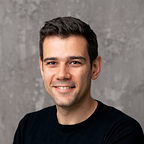Here’s How I Never Have Anything on My Desktop or Phone
I’ve reached Inbox Zero almost every day for about 5–6 years now.
Over time, I replicated this approach with my to-do list, desktop and (partially) phone. By the end of the day, I strive to have no tasks and no digital files remaining on my desktop.
Writing this, I realize it seems bizarre — why would you care about the number of emails or tasks you have? I’ve seen many people operate just as effectively with thousands of emails, dozens of open tabs and a second or even third desktop to host all of their files and shortcuts.
But for me, that clean slate looks very appealing. It’s not about reducing anxiety. It just feels damn good to end the day with nothing on my to-do list, no emails I haven’t addressed and knowing that all my files are safely backed up and ready to access anytime, anywhere on any device.
That’s how I prefer to operate and I know I’m not alone. So, here are a few cornerstone practices that help me achieve this:
- Use cloud storage for all files — every file and document I have to keep goes in Google Drive. If it’s something I need temporarily, say a screenshot for an article I’m writing, I’ll keep it on my desktop as a subtle reminder to complete whatever task it relates to. And then it goes in the bin.
- Use cloud storage for all photos and videos — similarly, the photos and videos I take are automatically backed up in Google Photos. Every once in a while, I’ll just use the automatic option to free up space on my phone, removing all the items that have been backed up already.
- Snooze emails — truth be told, this is the only way I can reach inbox zero nowadays. I snooze any email that I can’t deal with right now or that needs to be addressed on a different date. Outlook and Apple Mail have a similar feature, with most third-party email services like Superhuman having this option as well.
- Reschedule and archive tasks — similarly to emails, tasks are also easy to snooze for another day. If I find myself rescheduling the same task multiple times, I consider removing it altogether.
I guess all of this boils down to the following: strive to one-touch your tasks as much as possible instead of switching halfway through to another thing that needs your attention. When it comes to files and photos, use cloud storage for everything and delete stuff from your laptop and phone.
One note here is to consider an external hard drive in addition to cloud storage to make sure you never lose anything.
So, if like me, you’re also striving to simplify your digital life, I hope the practices above will help you work with more clarity and less stress.
If you enjoyed this article, consider subscribing to get notified when I publish new content.
